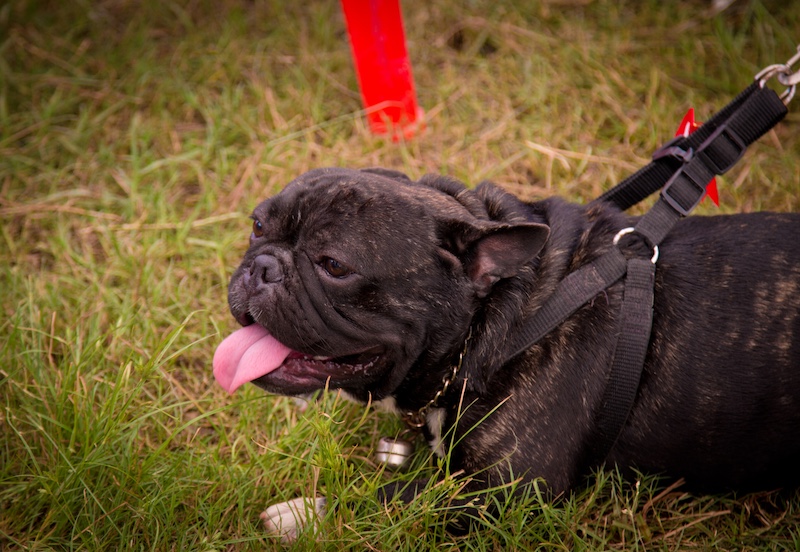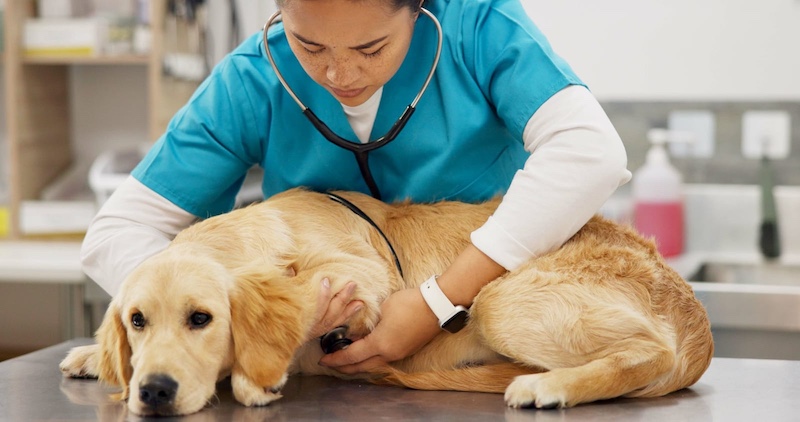As pet owners, we want our dogs to be healthy, happy, and free from discomfort. However, unlike humans, dogs can’t tell us when they’re in pain. Instead, they often communicate their discomfort through subtle changes in behavior, posture, and physical condition. Being able to recognize these signs is crucial in ensuring that your dog gets the care they need. Here are ten common signs that might indicate your dog is in pain.
1. Changes in Appetite

A sudden loss of interest in food or water can be a red flag. Dogs experiencing pain may refuse to eat or drink, either because of discomfort in their mouth, digestive issues, or general malaise. On the flip side, some dogs might eat less because they feel unwell, while others may eat more as a way to comfort themselves.
2. Excessive Panting or Heavy Breathing

Panting is normal for dogs, especially after exercise or in hot weather. However, if your dog is panting excessively or breathing heavily when at rest, it could be a sign of pain. Pain can cause a dog’s heart rate and respiratory rate to increase, leading to unusual breathing patterns.
3. Changes in Mobility

If your dog is limping, reluctant to move, or has difficulty getting up, it could indicate pain, particularly in the joints or muscles. Arthritis, injuries, or other conditions can make movement painful. You might notice your dog avoiding stairs, hesitating before jumping onto furniture, or lagging behind on walks.
4. Vocalizations

Dogs in pain might whine, whimper, growl, or bark more than usual. These vocalizations can be a direct response to pain, especially if they occur when a specific area of the body is touched. Some dogs, however, may become unusually quiet if they are in pain, so any change in vocal behavior is worth noting.
5. Licking, Biting, or Scratching Specific Areas

Dogs often lick, bite, or scratch areas that are causing them discomfort. If your dog is focusing on a specific part of their body, such as a paw, joint, or their abdomen, it might be because they are trying to soothe the pain. Over time, this behavior can lead to sores, hair loss, or infections.
6. Changes in Posture

A dog in pain may adopt unusual postures to avoid discomfort. For example, they might hunch their back, tuck their tail, or lie down in a way that they don’t usually do. A common sign of abdominal pain is the “praying position,” where the dog’s front legs are stretched out while the rear end is raised.
7. Behavioral Changes

Pain can lead to changes in your dog’s behavior. A normally friendly and social dog might become withdrawn or irritable. They might avoid being touched, hide, or show aggression when approached. On the other hand, some dogs may become overly clingy, seeking constant comfort from their owners.
8. Changes in Sleep Patterns

Dogs in pain might have trouble sleeping or may sleep more than usual. Restlessness, frequent shifting positions, or difficulty getting comfortable can all indicate discomfort. On the other hand, if your dog is lethargic and sleeping more than usual, it could be a sign that something is wrong.
9. Changes in Eye Appearance

The eyes can be very telling when a dog is in pain. Squinting, redness, or changes in pupil size can indicate discomfort, especially if the pain is in the eyes or head. Some dogs may have a glazed or unfocused look in their eyes, which can be a sign of pain or distress.
10. Reluctance to Be Touched

If your dog suddenly flinches or pulls away when you try to touch them, especially in certain areas, it could be because they are in pain. Even the most affectionate dogs might avoid being petted if they are hurting. Pay attention to any areas that seem particularly sensitive or off-limits to your dog.
This content was created with the assistance of AI and thoroughly edited by a human before publishing.

